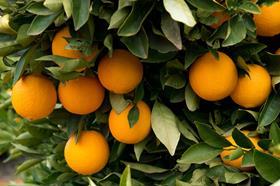
Australia’s citrus industry has enjoyed its most profitable export season on record in 2016. Citrus Australia’s market access manager, David Daniels, discusses the sector’s performance and highlights a number of key trends.
Overall, how did the sector perform over 2016 with regards to sales volumes and values?
David Daniels: Ithas been another record season. Trade figures until the end of October indicate that Australian Citrus exports (all citrus) are valued at A$315m, representing an increase of 20 per cent on the same period last season. Total volume so far is 209,000 tonnes, with two more months of data still outstanding.
China is the leading market at 39,000 tonnes, followed by Japan at 35,000 tonnes. Trade with China is now valued at over A$71m. Hong Kong is still a large market at 26,000 tonnes. Canada is the only real surprise, with sales up by 55 per cent on last season.
The commodity mix is not atypical with oranges making up 74 per cent, and mandarins making up 24per cent. Lemons, limes and grapefruit now represent just over 2 per cent. Returns are obviously higher this year, remembering that the total export value last season was A$288m for the same volume of fruit.
Are there any key trends forming in regards to demand for certain export lines or certain markets this season?
DD: With a general shortage of fruit from our competitors and short seasons all over the world, demand for Valencia oranges this season was quite remarkable, with exporters unable to fill orders. Modest volumes of grapefruit were exported to Japan, with a shortage of supply from South Africa. As has been the case for several years, lemons have been in strong demand and substantial volumes have been exported to markets like Indonesia.
Is growing demand for Australian citrus prompting an expansion in production area? If so, which varieties are predominantly being planted?
DD: We are not so much seeing an expansion in hectares or production but rather a redevelopment of orchards towards varieties that export markets are demanding. It looks like the navel crop will become more balanced in the mix of early, mid and late season varieties. In other words, we won’t see quite the peak of Washington navels in a few more years.
The only significant change that is abundantly clear is the decline of Valencia plantings. Anecdotally, we are hearing that consumers in overseas markets are developing a preference towards the convenience of “easy peelers” with low seed counts but this really remains to be seen. Demand for both navel and Valencia oranges certainly hasn’t seen any decline whatsoever.
Chinese buyers have become even more discerning than in previous years with a strong preference towards count 72 fruit. The challenge in future years will be to provide adequate supply that meets market requirements.
Were there any challenges around market access this season? If so, have they been resolved or will they likely be resolved in time for the 2017 season?
DD: It has been a very good season with barely any reports of disruption, distressed cargo, or issues with inspection or certification. The Authorised Officer model has worked extremely well and it is doubtful that we would have seen the same volume of trade under the old model; government services just would not have coped.
It’s still very early but are the any indications as to how crops are shaping up heading into 2017?
DD: It is very early to say but it appears that there will be more volume available for exports with next season’s crop. But that is only relative to this season, which ended very early, with most regions yielding below average volumes.






No comments yet